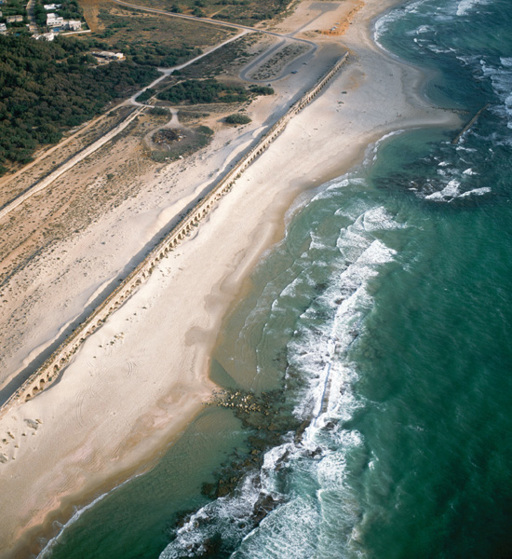Legions of Rome (95 page)
Authors: Stephen Dando-Collins
This golden sword and scabbard would have been the proud possession of an imperial officer. (see
The Legionary’s Weapons
)
(The Art Archive / Provinciaal Museum G M Kam Nijmegen Netherlands / Gianni Dagli Orti)

A cameo showing the emperor
Augustus
early in his reign. Augustus was the father of the imperial legions, improving their organization and command structure.
(The Art Archive / British Museum)

Roman officers and
marines
ready to storm aboard an opposition ship. The ship’s oarsmen, out of sight below deck, were paid seamen, not slaves, and were trained to join shipboard fighting also.
(AKG Images / Vatican Museums)

This Roman aqueduct along the Mediterranean Sea, in Caesaria, Israel, was built by troops of the
10th Fretensis Legion
.
(Corbis / Richard T. Nowitz)

Rome’s chariot-racing corporations had first call on horses from stud farms throughout the Empire, even ahead of the Roman army. This charioteer, represented in a pavement mosiac, drove for the Greens corporation. (see
Cavalry
)
(The Art Archive / Gianni Dagli Orti)

Scythian fighters such as these shown on a gold ornament were typically armed with bows and arrows. It was for defeating warriors like these that the
4th Scythica Legion
gained its title.
(The Bridgeman Art Library / Boltin Picture Library)

This sculpture depicts Claudius overwhelming a female figure representing Britannia. Claudius, who had no military experience, silenced his military critics by masterminding the
AD 43 invasion of Britain
by four legions.
(Darren Wickham).

Built by Herod the Great and named after his friend Mark Antony, Jerusalem’s massive Antonia Fortress was praetorium of the legion cohorts stationed at Jerusalem. Falling to Jewish rebels in AD 66, it was leveled by Titus’ legions in AD 70. (See
Rioting in Jerusalem
)
(Corbis / Richard T. Norwitz)

The rocky outcrop of
Masada
, today, showing the remains of the palace of Herod. Masada was one of the first Roman fortresses to fall to Jewish rebels in AD 66. It was retaken by the 10th Fretensis Legion and auxiliary units in AD 73.
(Corbis / Nathan Benn / Ottochrome)

Chronicling Trajan’s second-century conquest of Dacia after two bloody wars,
Trajan’s Column
was designed to be “read” by walking around the ramped structure, which no longer exists, that originally wound around it.
(SCALA, Florence / Ann Ronan / HIP)

Marcus Aurelius
spent most of his second-century reign away from Rome, leading the fight against German tribes who invaded Roman territory via the Danube.
(Corbis / Paul Seheult / Eye Ubiquitous)

Ctesiphon
, one of the Parthian capitals, ruins of which are seen here today, was the target of various Roman invasions, and was twice taken by the legions.
(Topfoto / Roger Viollet)